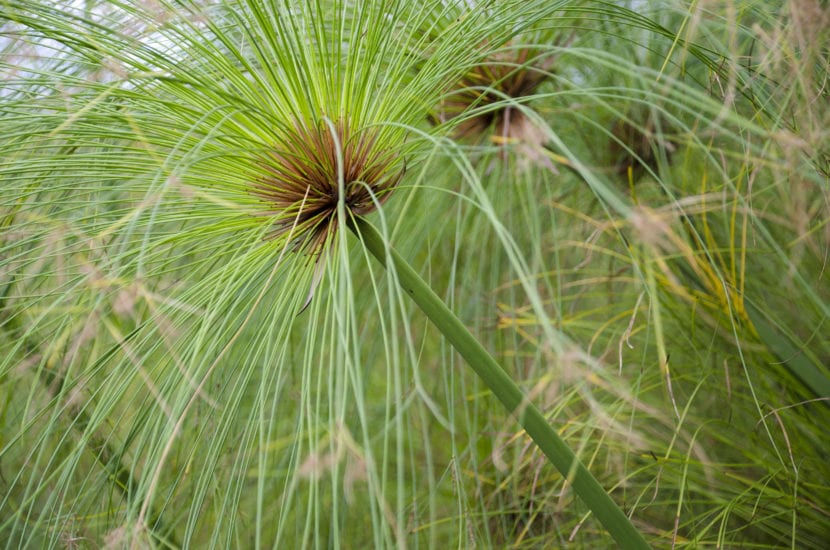
Few aquatic or riparian plants are as popular as the papyrus. Although there are several species that are very similar, our protagonist is the only one that has the leaves whose thickness is not greater than that of the wool thread.
Although it does not have decorative flowers, it does not need it: its bearing is already very elegant. But if we add to that its easy cultivation, we can say without mistake that we are talking about one of the most interesting plants in the world. Would you like to know more about it? 😉
Origin and characteristics
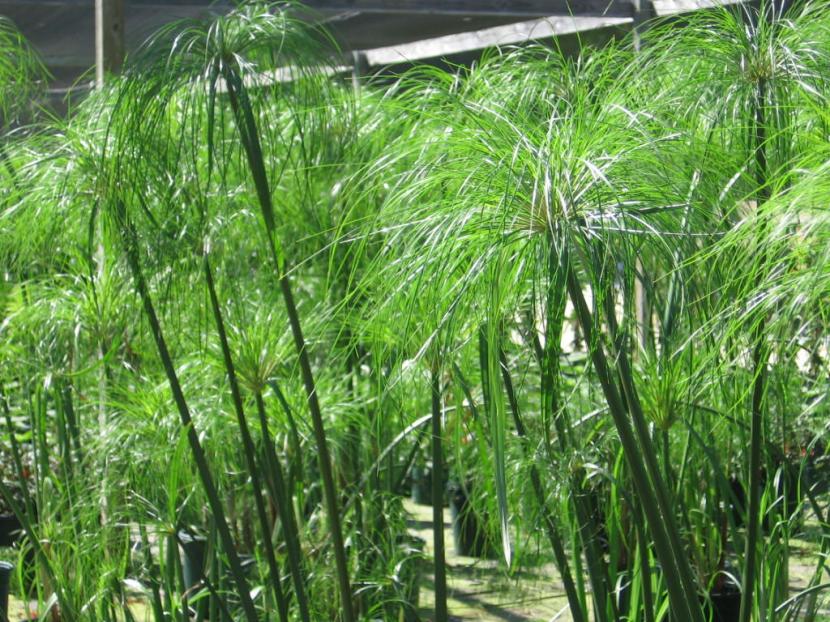
It is a rhizomatous aquatic plant native to the Mediterranean Sea, mainly from Egypt where it grows on the banks of the Nile River as well as in its delta. Scientific name Cyperus papyrus, is popularly known as papyrus or papyrus of Egypt.
It develops thin stems, about 2cm thick and with a length of three to six meters, at the end of which there are tufts of long and thin jade green leaves. Towards spring-summer, spike-shaped flowers sprout of a slightly ornamental brown color.
How do you take care of yourself?
If you want to get a copy, we recommend providing the following care:
Location
It can be both indoors and outdoors, but it will grow best if it is outside the house in an area exposed to direct sunlight. Inside the home it is normal for it to have a somewhat weaker development, unless it is in an interior patio with (natural) light.
Irrigation
Very frequent; in fact, it can be planted in a pond or in a pot without holes -or even in a rubber bucket that gardeners use- and water every 2-3 days. Only if we are going to have it indoors will we have to plant it in a container with holes to prevent it from rotting in winter.
Subscriber
It's advisable fertilize it in spring and summer with liquid organic fertilizersand guano what can we buy here. We can also add egg and banana peels.
Planting or transplanting time
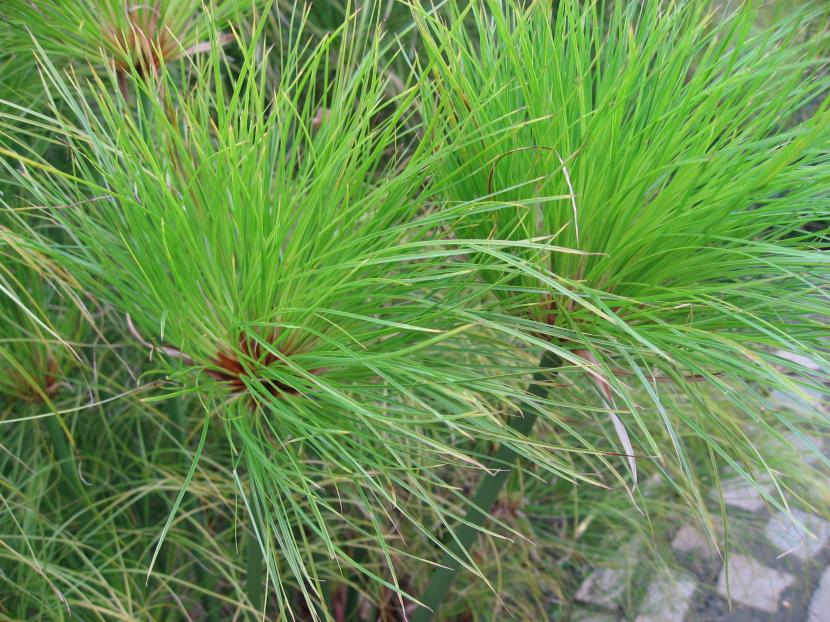
In spring, when the risk of frost has passed. In the case of having recently bought it, we must transplant it as soon as the temperature rises above 15 degrees Celsius.
Earth
- Flower pot: it can be a universal growing substrate without problems. We can get it here.
- Garden: it is indifferent, but it is advisable to have good drainage.
Pruning
The pruning of the papyrus is done late winter. You have to remove the dry, diseased or weak stems so that it can look as beautiful as the first day.
Multiplication
Tuber division
To get a new copy without having to buy another, what we can do is cut a stem from the base, separate a large tuber that is on the edge of the pot and finally plant it In other site.
Cuttings
To multiply by cuttings simply you have to cut stems of about 10-12cm and put them upside down in a container with water. The only thing is that you have to wait for it to bloom, which it will do as we have said before in spring.
Seeds
It is very difficult. You have to get fresh seeds because their viability period is very short, and of course, for that you have to find a plant and wait for it to flower. If we succeed, We have to sow them in pots with a universal growing substrate that is always moist without burying them practically nothing.
If all goes well, they will germinate in 7-10 days maximum.
Plagues and diseases
No problems or pests or diseases.
Rusticity
Withstands cold and frost up to -2ºC, maybe -3ºC. From experience I can say that it can be grown outdoors in areas with a warm Mediterranean climate. Although it is possible that it turns a little yellow as a result of the low temperatures, in spring it sprouts strongly.
What uses does it have?
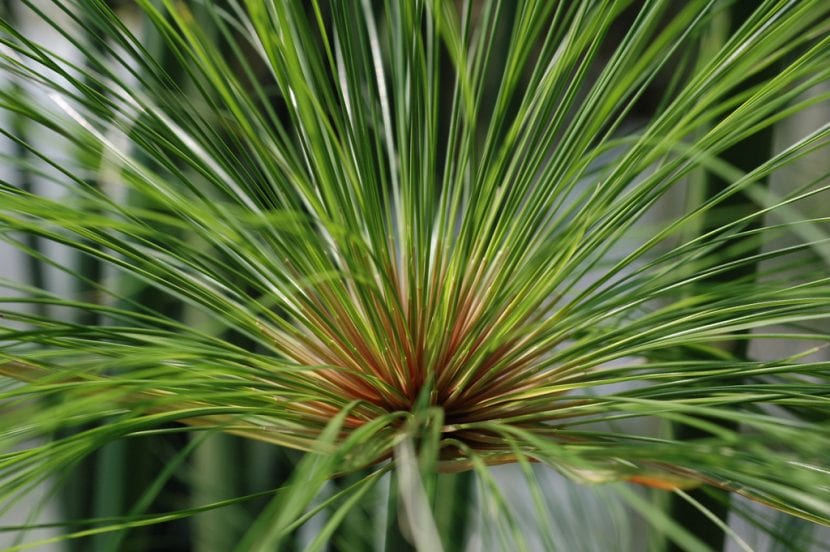
Image - Flickr / Eric Hunt
Papyrus is a plant that has had two uses: ornamental and as paper.
Ornamental
Es very decorative, so much so that it looks great in any corner. Regardless of whether we grow it in a pot or in soil, we can be sure that we will make that room never look the same ... but much better.
Like paper
In the time of the pharaohs it was used intensively to make paper. How? Following these steps:
- The first thing to do is cut stems that look healthy.
- Then the outer layer is peeled off.
- Then the inner part is cut into thin strips and put in a container of water for 72 hours.
- The strips are then placed on a hard, flat surface and flattened into sheets by rolling them flat.
- The next step is to place the strips on a dry linen or terry cloth so that the top layer is perpendicular to the bottom layer.
- The strips are covered with a second layer of linen cloth, so that said layers are in the middle of the two pieces of cloth, and it is placed between two wooden boards.
- For everything to go well, you have to change the linen fabrics every 2-3 hours for dry fabrics. The entire drying process takes 72 hours.
- After that time, the papyrus sheet is flattened with a roller.
- And ready!
Where to buy?
Plant We can buy it at any nursery or garden store, but it is very important to know what we buy. There is another plant, the Cyperus alternifolius, which is too often sold as papyrus but is NOT. It must be remembered that the papyrus leaves are very thin, while those of the C. alternifolius they are much wider and have a darker green color.
To avoid confusion, here is a photo of C. alternifolius:
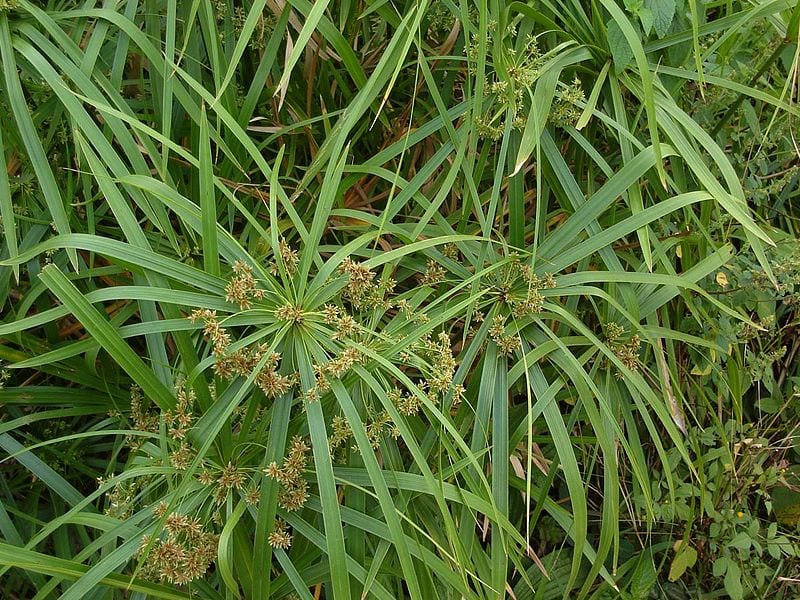
Image - Wikimedia /tauʻolunga
What did you think of the papyrus? Do you have a copy?